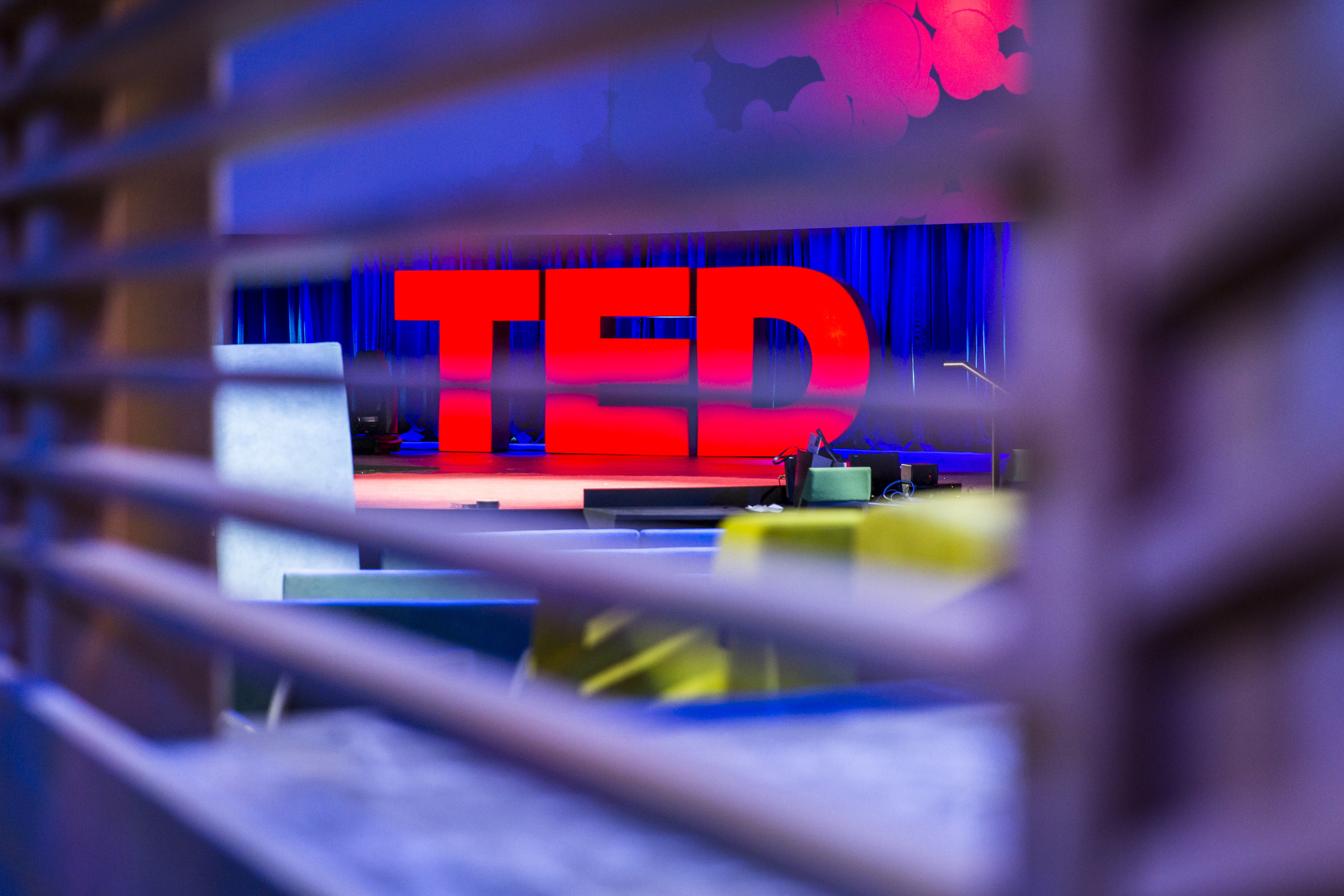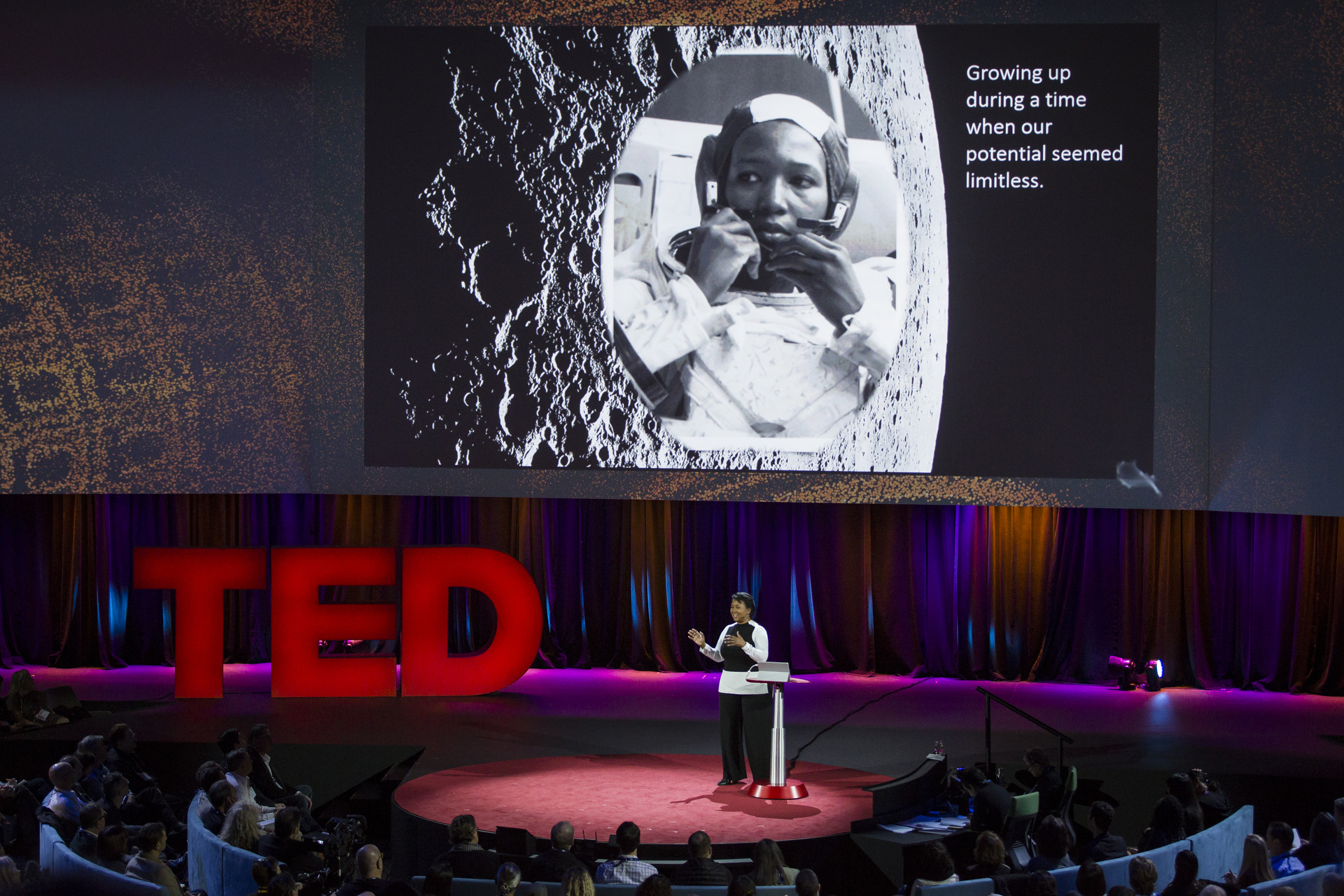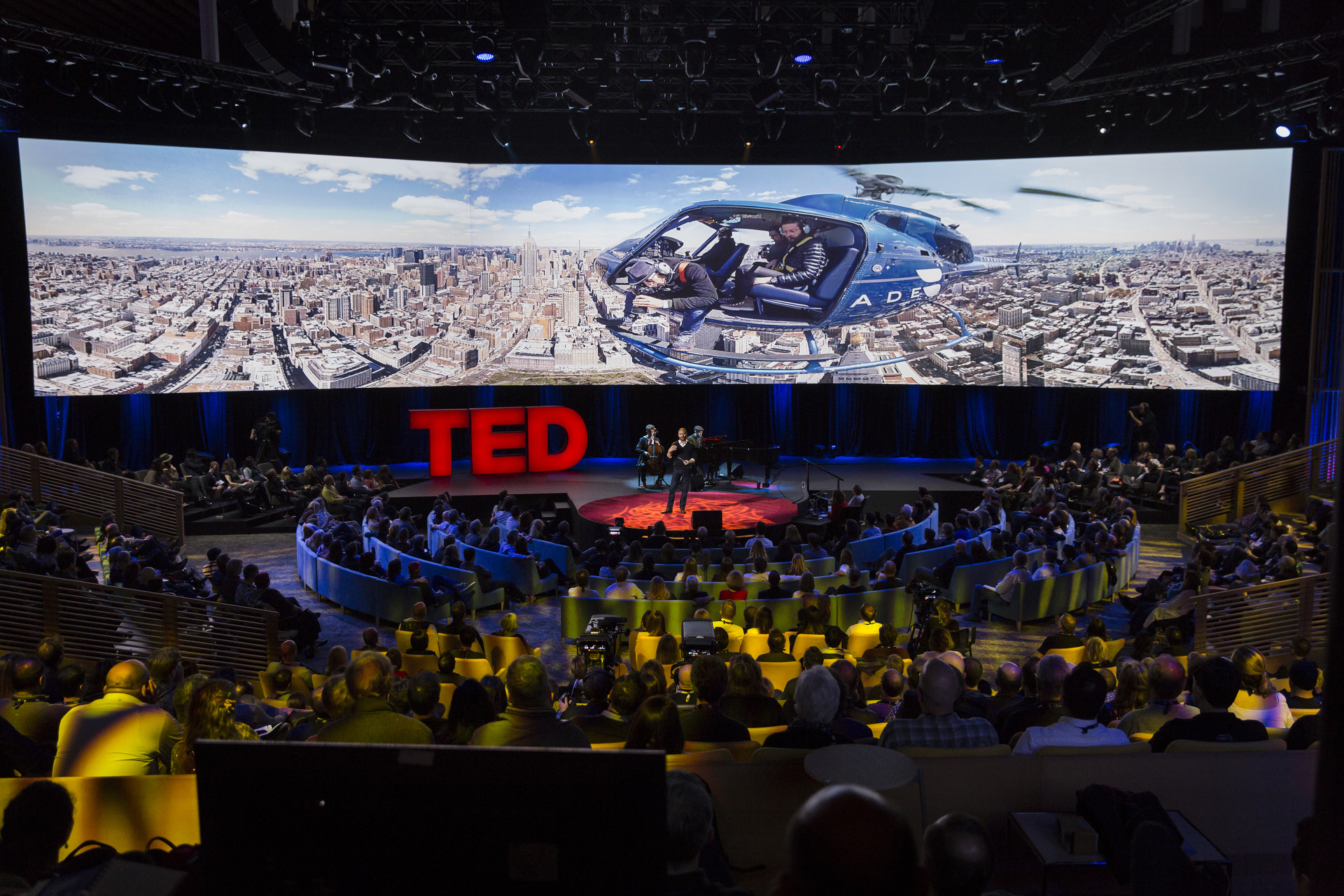
The major themes that ran through TED2016 ranged from social justice to virtual reality. The conference was held February 15-19, 2016, in Vancouver and talks from it are already online. Photo: Marla Aufmuth / TED
Day five of TED2016 contained one session filled with big ideas, but also an opportunity to look back at the conference as a whole. Below, the major themes that ran through the course of the week.
We’re ready for our moonshot moment. The most-evoked image of the conference? Neil Armstrong’s first step on the moon. Speakers including Dan Pallotta, Mae Jemison, Astro Teller and Andrew Youn all pointed to the impact of this moment. Almost all of them were asserting that humanity can rally together to make incredible things happened. All of them expressed the desire for us to unite and do something equally outlandish and big — be it reversing our negative impact on the planet, ending poverty, connecting everyone to the Internet or moving toward interstellar travel.
But triumph can come from the small things too. While Erin McKean picked ‘moonshot’ as the word of the conference, it was a celebration of counter-moonshots too. Linus Torvalds gave a rare interview, and expressed that, though he’s known for creating the ubiquitous tools Linux and Git, he had no visions of grandeur. He was just solving the problem in front of him. Similarly, Lidia Yuknavitch wanted to talk about a “small idea.” She shared an alternate to the hero’s journey — the quest full of bumps and stops taken by the misfits of the world. “Fellow misfits,” she said, looking out into the audience, “I can almost see your heads glowing.”
The search for racial justice. Architect Michael Murphy shows plans for a new memorial in Montgomery, Alabama, to commemorate the hidden history of racial injustice in the United States. Lawyer Bryan Stevenson joins him on stage to support the project, a partnership with his Equal Justice Initiative. The US must come to terms with its history, says Stevenson, and this is a step in the right direction. The next day, Adam Foss gave an eye-opening talk on how we can look to right wrongs by educating our prosecutors, who in our current system of criminal justice are incentivized to throw as many people in jail as possible. John Legend followed Foss with a performance to pay tribute to those caught in the cycle of the US prison system.

Mae Jemison is one of the many speakers at TED2016 who evoked the moonshot, calling for us to work across disciplines toward radical leaps. But there was another camp of thought at the conference, of focusing on small, specific problems. Photo: Marla Aufmuth / TED
Wonder of the past. Dazzled by all the new technology, we also found time at TED this year to dive deeply into the past. Paleontologist Kenneth Lacovara took us on a whirlwind journey through the geological history of the earth and the improbability of dinosaurs; Sarah Parcak revealed her TED Prize wish to help make archaeologists out of everyone who wants to help identify ancient sites; and Amit Sood of the Google Art Project zoomed through a database of 6 million artifacts of cultural history. All three talks brought the audience to their feet.
Two perspectives on what it means to be rich. In the last session of TED2016, journalist Courtney Martin gave an optimistic talk about the “new better off,” and the need to redefine what it means to be successful. In a time where the majority of American parents think their kids won’t be better off than they were, she urged us to be flexible about how we work and let go of the dream of the white picket fence. Meanwhile, in a somber, moving talk, Casey Gerald — a Harvard MBA, a former Lehman Brothers intern — explored his loss of belief in the power of wealth and education. He asked the audience to reexamine their own churches, whatever they may be, and find a way to cast doubt.
A fresh attitude on climate change. Al Gore’s optimistic, impassioned talk about climate change lifted spirits on a topic that has been the source of so much concern. “When any great moral challenge is ultimately resolved into a binary choice between what is right and what is wrong, the outcome is foreordained because of who we are as human beings,” Gore said. Christiana Figueres, fresh off December’s landmark Paris Agreement, is also hopeful. She told the story about how she went from a cynical doubter to relentlessly optimistic global ambassador. “Impossible isn’t a fact; it’s an attitude,” she said.
Reality is boring; let’s try something else. Kinect creator Alex Kipman believes that, thousands of years from now, we’ll look back on our current era as a pretty weird time — “a singular 100-year period in the vastness of time where humans communicated, were entertained and managed their lives from behind a screen.” The augmented-reality company Meta asks us to imagine our future Iron Man capabilities — with an interface that’s based on how we think. And filmmaker Chris Milk tells us that his entire life he’s trying to recreate the magic of music and failed, until now. He takes the audience on a large-scale collective VR experience. Oh, but there was so much virtual and augmented reality at this year’s conference, all thoroughly exciting. Including a sea monster who spits water in your face.

Chris Milk is one of several speakers to share the possibility of virtual and augmented reality. Photo: Marla Aufmuth / TED
Comments (2)